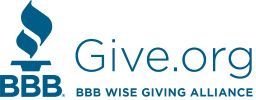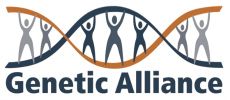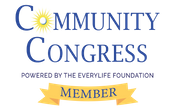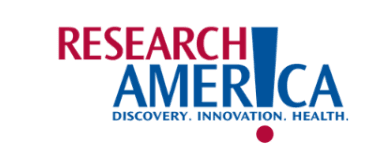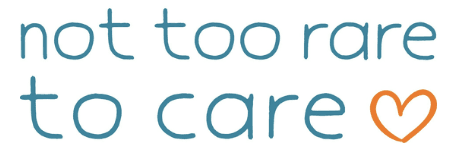2017 - 2020 Strategic Plan
PRIORITY 1 – Expand science and medicine program to further encourage finding treatments or a cure
Outcome 1.1 – Facilitate pre-clinical and clinical studies/trials
- Expedite efforts in TAZPOWER trial
- Initiate bezafibrate clinical trial
- Prepare for gene therapy clinical trial
- Advance the understanding of BTHS (natural history study/aging)
- Continue to explore development of enzyme replacement therapy
- Continue to explore development of repurposing drugs and/or screening compounds for potential therapy
- Continue to explore development of lipid replacement therapy
- Encourage the publication of amino acid supplementation in BTHS
- Develop a scientific/medical framework to outline advances in BTHS
Outcome 1.2 – Support researchers through research grant program
- Increase the number of qualified research grant applications by 10% each year
- Continue to support BTHS publications through open access
- Establish research priorities to advance drug discovery
Outcome 1.3 – Establish next iteration of Barth Syndrome Registry and Repository (BRR2.0)
- Where possible, coordinate validated questions and responses with other registry groups relevant to BSF
- Use BRR2.0 to support research and clinical trials
- Increase enrollment in BRR2.0 each year
- Promote and track usage by researchers and physicians
- Work toward BRR 3.0
- Establish a BRR advisory committee and strategic plan for deliverables for the BRR
- Explore development of shared institutional partnership agreements to connect data from 1.0 and 2.0, genetic variant database and biological specimens
Outcome 1.4 – Identify high priority areas for focused research Investigate benefits of genomic sequencing
- Investigate benefits of mRNA sequencing with various pharmaceutical compounds
PRIORITY 2 – Enhance the capacity of Barth Syndrome Foundation to better meet its mission
Outcome 2.1 – Ensure that the Barth community is prepared to participate in clinical trials
- Develop clinical trial educational materials to foster a culture of engagement and participation in clinical trials for the development of therapies
- Establish clinical trial readiness framework
Outcome 2.2 – Increase the breadth and depth of committed contributors
- Increase contributions from new sources
- Increase donor retention rate year-to-year (excluding memorials/honorariums)
- Encourage repeat contributors to increase their donation
- Increase number of solicitors and campaign events
- Encourage a culture of philanthropy throughout the organization
- Further diversify the BSF Board of Directors
- Better capitalize on Board members’ abilities to contribute to BSF
Outcome 2.3 – Increase the number of identified individuals with BTHS
- Expand reach through connection with all diagnostic laboratories
- Focus attention on pediatric cardiologists
- Encourage those diagnosed with BTHS to affiliate with BSF
Outcome 2.4 – Partner with institutions and create alliances that accelerate research, increase awareness, and improve treatment
- Track non-BSF funding for Barth syndrome-specific research and/or clinical trials
- Deepen strategic alliances with other agencies that will propel BSF’s mission
- Explore partnering with for-profit entities
- Maintain ongoing communication with government, umbrella and peer partner agencies
- Identify pertinent educational meetings/conferences for BSF representatives to further the overarching mission
Outcome 2.5 – Integrate affiliates as appropriate
- Expand financial resources for BTHS research through affiliate coordinated funding strategy
- Encourage participation and leadership by affiliates in BSF programs
- Expand reach by establishing new affiliates
- Encourage sharing of best practices and experiences among affiliates
Outcome 2.6 – Facilitate participation at centers of excellence/clinics for BTHS
- Maximize the number of families who participate by providing information
- Encourage collaboration among centers/clinics and participants’ local physicians
- Encourage clinicians at centers/clinics to assist in the development of treatment guidelines
Outcome 2.7 – Evaluate viability of venture philanthropy
PRIORITY 3 – Build confidence and trust in Barth Syndrome Foundation’s community and resources
Outcome 3.1 – Sustain a strong, mutually supportive community with a shared mission
- Maximize family participation/engagement in the following areas:
- Sci/Med – BRR2.0, clinical trials, centers of excellence/clinics
- Fundraising/Volunteerism – time, talent, treasure, testimonials
- Family Support – Listserv, conference, regional outreach
- Maximize the number of clinicians and researchers who:
- Attend the conference o Contribute on the Sci/Med Listserv
- Request information about BSF; refer patients to BSF
- Further develop use of social media to promote awareness and extend BSF’s reach
Outcome 3.2 – Be an essential source of credible information for families, clinicians, and researchers
- Enhance: website, printed publications, Listserv, videos, grand rounds, clinic visits, etc.
- Engage adults with BTHS in program evolution, including transition to adult care and beyond
- Engage carriers in program evolution
- Encourage researcher, clinician, affected individual, and family ambassadors of BSF
- Facilitate treatment guidelines for BTHS
- Develop communication strategy to ensure timely and accurate dissemination of information of interest to the BTHS community
- Develop a replacement for the Listserv that can leverage technology to identify common family needs and provide direction for program priorities
- Establish a clinical consensus committee to develop/update evidence-based approaches to care (i.e., recommendations, fact sheets and other publications)
- Promote a culture of advocacy by providing access to credible information about policies and issues that would impact the provision of care for those who have BTHS
Outcome 3.3 – Continue to organize the finest scientific, medical and family biennial conference on BTHS
-
Printable version of 2017 - 2020 Strategic Plan
Last updated 2/28/2019



